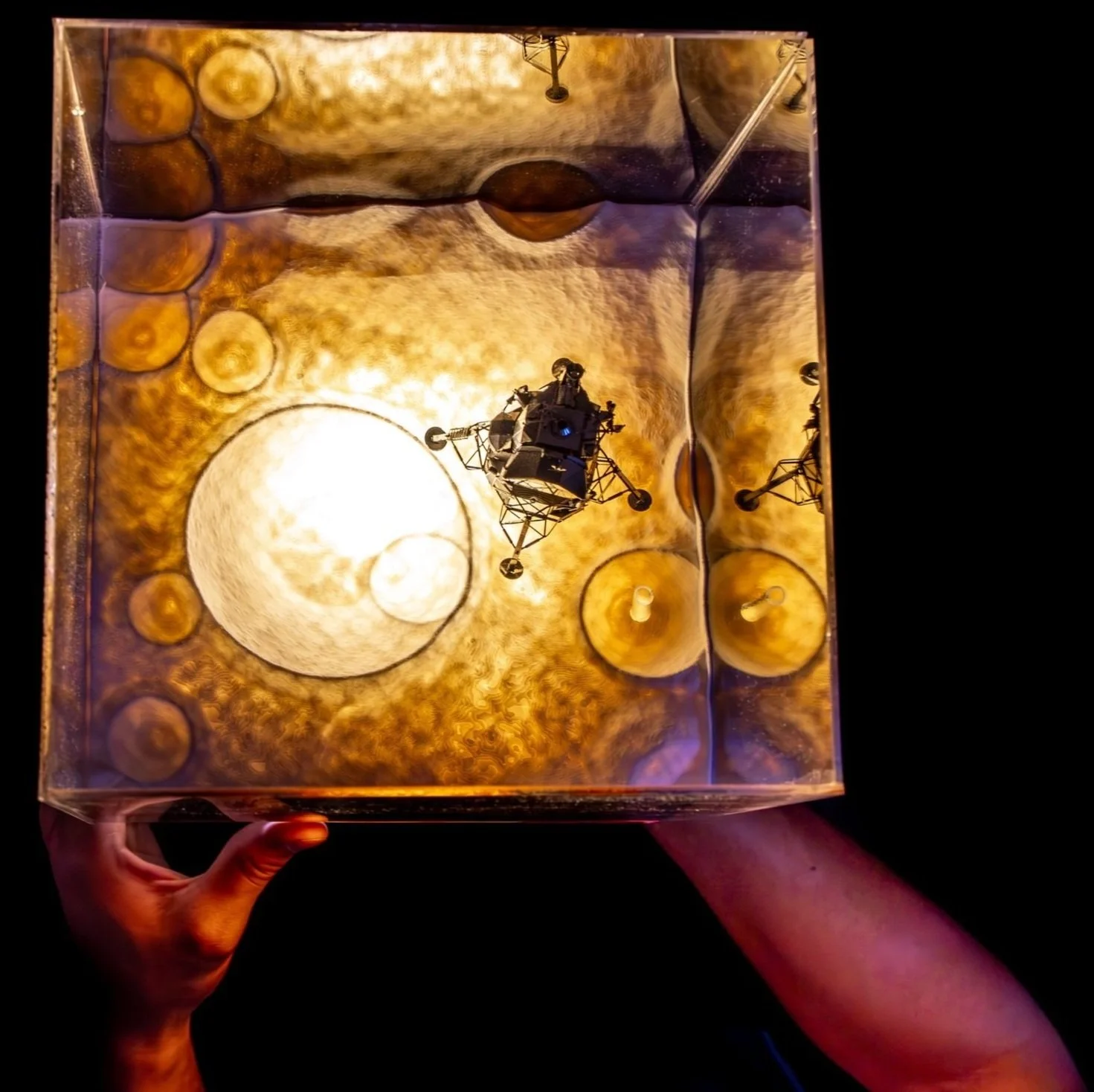MOON FIENDS
MOON FIENDS
MOON FIENDS
luxury Lunar living… for ants!
With spacious tunnels that can accommodate even the plumpest of thoraxes, the moon fiends lunar colony is the perfect place to cultivate your nascent superorganism .
Live, work, pupate.
Never miss a minute of the scintillating lunar action through the tangerine-tinged windows of your Moon Fiends Lunar Colony. You’ll watch every antenna twitch, and see every gaster pulsate through the crystal clear, Lunaspex windows. Life in the panopticon has never looked so groovy!
Premium LunaspeX™ viewing ports
Bask IN the
GLOW
I originally planned on making the ant colony out of a block of material called Ytong. As I understand it, it’s an especially porous type of concrete that is easy to carve. However, i couldn’t source it easily, so I had to go back to the drawing board. I was put off by the cost and mess of buying, melting and forming paraffin wax, so I settled on teaching myself how to 3D model in Blender and running a 3d printer instead.
I learned a lot with Mark 1. Everything from the shape of the tunnels to the filament material, was a misfire.
The Mark 2, featured on this site, is a huge improvement. I added recesses for removable windows, a more natural cave structure (the “skeleton” of which was produced with custom Python code that I then enhanced with manual modeling), and an “overworld” that was meticulously designed with Blender’s powerful geometry nodes feature. It’s quite literally better in every way.
I printed on a BAMBU labs P1S printer (courtesy of the Animal Inspired Movement and Robotics Lab where I also work on the mCLARI) with matte white PLA. The orange window pieces (designed to evoke cellar automata and the set design of 2001: A Space Odyssey) were cut on a 75 watt laser cutter at the Boulder Public Library’s BLDG 61 makerspace.
of one hundred million watts that course through the lunar regolith. Your Moon Fiends Lunar Colony will radiate an eerie, unexplainable light. Perfect to set the mood in your boudoir, command module, or rumpus room.
How did you
make this?
…then sing the body
electric
as otherworldly music echoes from the caverns below the lunar surface. Your proximity activates the built-in theremin, so you too can join the fiendish chorus.
Why ants?
why the moon?
Ants are not people’s first idea of an amazing pet. In fact, I know more than one person who has had a rough run-in with a biting, stinging colony of ants. However, I could never shake the appreciation I had for ants (and every other creepy crawly) that I developed as a kid playing out in my backyard.
So, I wanted to create something that would help draw people in closer to a somewhat off-putting creature, and maybe share some of the fascination I have with the small, the overlooked, and the pesky animals that often surround us.
My (rather disappointing) experience with Sea Monkeys as a kid taught me something valuable: a fantastical backstory can endear even the most alien-looking animals to countless people around the world. If comic book ads with smiling Atlantean mermonkeys can make kids beg their parents for a plastic aquarium filled with brine shrimp, then I should have no problem rehabilitating ants’ image with an amazing backstory of their own.
I suppose I settled on a moon colony because it engenders nostalgic images of the space race and retrofuturism, and I’ve always had a bit of an artistic obsession with it.
It makes music?
Yes! A core part of the design of the Lunar Colony is that there is a theremin nestled inside the main body. This feature really encourages people to get up close and personal with the insects inside.
For those who don’t know, a theremin is “the only instrument you play by not touching it”. Traditionally made out of bulky electronics- the theremin inside the base is built from a microcontroller and programmed in C.
The ATmega microcontroller collects and processes proximity data from capacitive touch sensors on a breakout board. The viewers proximity to the two side walls without windows plays chords (the midi synthesizer is polyphonic) in C Mixolydian. A low drone in the background helps give the music a spacey feel.
The Moon Fiends themselves will play music alongside you. An ant’s capacitance is relatively small, but when the colony has a critical mass congregating at specific caverns, the microcontroller will detect their presence and add to the melody.
What’s next?
There are significant improvements planned for Mark 3. I learned about the library’s laser cutter about halfway into the project, just in time to cut the orange windows. To ensure better fitment, the “tunnels” window and the overworld walls will be cut on this machine instead of a saw.
The magnet holes had to be finessed with a Dremel tool to allow the magnets to sit flush. In the next iteration, by slightly increasing their diameter, the magnets will slide in much easier, and fit snugly with a small amount of epoxy.
A unibody design is also the next logical step. I had split things up in anticipation of using a different , smaller 3D printer. With access to the P1S, size is not really an obstacle now, and the entire structure could be printed in one go. This will save messy gluing in the future, and make it a simple one-click print job.
I’ve learned a lot about Blender since starting this project and have designs for more detailed elements. Most of these are in the planning phase now, so no spoilers! However, a second set of tunnels is definitely in the works, as it will allow ant species with larger colony sizes to be used. It is currently hosting Camponatus Dicipiens because they don’t have nearly as large of colonies as other ants, but I would like to use a more robust and prolific species in the future.





